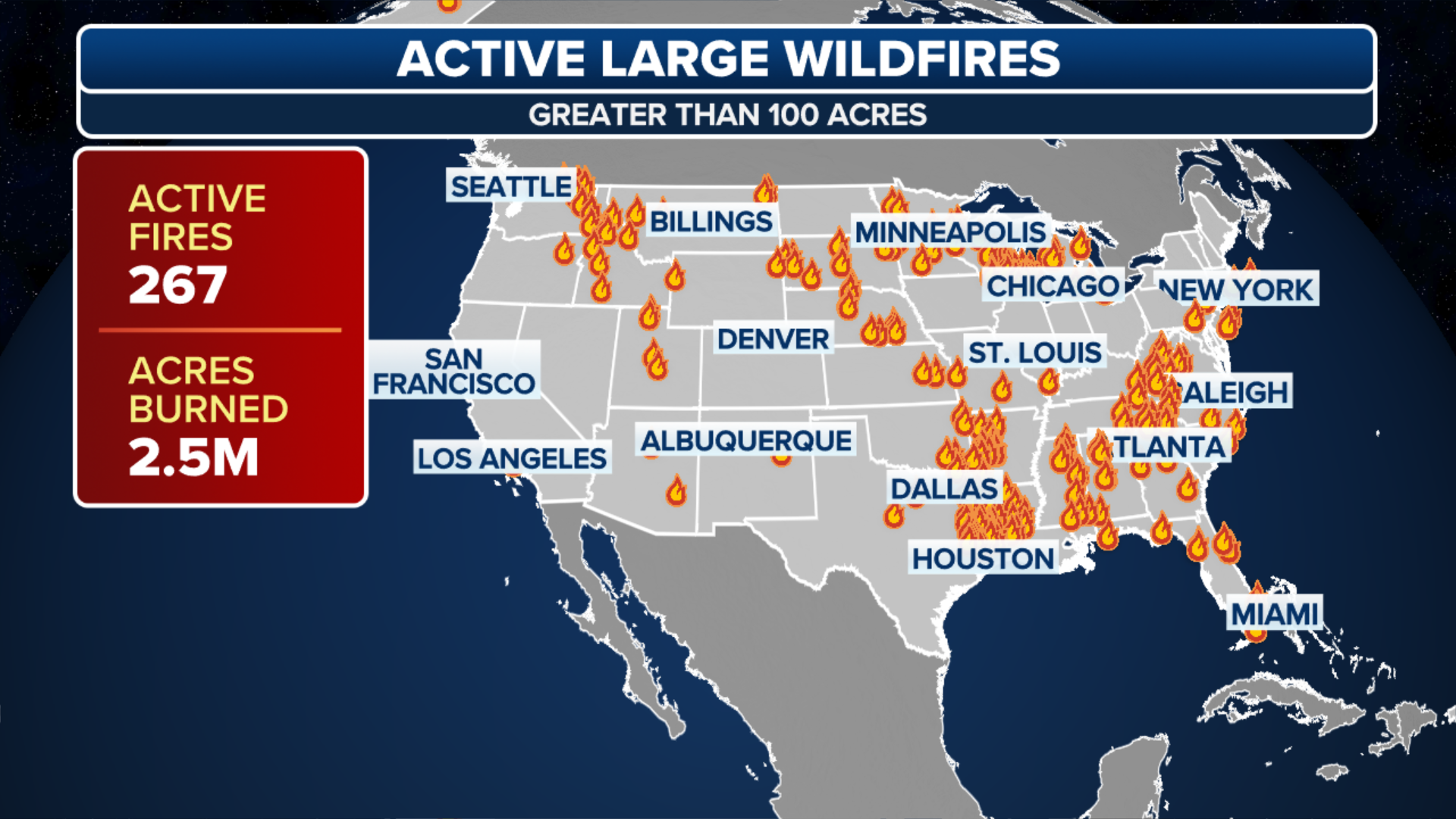Western wildfires grow amid heat wave, increasing drought
Despite the appearance of an active fire year, data from the National Interagency Fire Center shows that wildfire activity is below normal. So far in 2024, more than 24,000 fires have been reported, while the average number is usually over 30,000.
Video from outside the Lake Fire in Santa Barbara County
A wildfire burning in the hills and mountains of Santa Barbara County threatened homes and businesses including the former estate of Michael Jackson.
LOS ANGELES – A stubborn, dayslong heat wave coupled with little precipitation across the West has led to an uptick in fire activity, with large blazes now in every western state.
Data from the National Interagency Fire Center showed firefighters working at least 68 large wildfires across the nation, which have consumed nearly 700,000 acres.
The largest fires are burning in Alaska, California and Oregon, where thousands of firefighters are working to increase containment lines.
The McDonald Fire in Alaska is the nation’s largest fire and has burned nearly 150,000 acres outside of Fairbanks.
Due to its rural location, few if any, structures have been threatened by the wildfire. It does occasionally send smoke plumes over the state’s second-largest city.
Further south in the continental U.S., the fire season has become deadly with the crash of a firefighting plane in Montana and the discovery of human remains in Northern California’s Mina Fire.

(FOX Weather)
The peak of wildfire season in California typically occurs from August through October, but officials warn that the season is now a yearly event, with blazes possible at any time.
So far in 2024, CAL FIRE has reported nearly 100 structures have been destroyed by flames from the 3,630 wildfires that have impacted the state.
The largest fire continues to be Santa Barbara’s Lake Fire, which has consumed more than 37,000 acres around Michael Jackson’s former Neverland Ranch. Despite its size, only three structures have been reported to have been destroyed.
Temperatures in the 90s and 100s have made firefighting difficult. At least half a dozen people, including firefighters, have been injured, with heat illnesses playing a significant role in the safety of first responders.
LIGHTNING SPARKS ALASKA’S LARGEST WILDFIRE OF YEAR

A plane drops flame retardant on a scorched hillside at the Poppy Fire on July 10, 2024 in Santa Clarita, Los Angeles County, California where temperatures reached over 101 degrees Fahrenheit (38 degrees Celsius). A record-breaking heat wave continued to grip the western United States on July 9, smashing records and endangering lives with little relief in sight. Approximately 162 million people -- nearly one-half of the US population -- were living in areas under active heat warnings, according to the National Weather Service.
(Photo by ROBYN BECK/AFP via Getty Images / Getty Images)
Wildfire activity is typical
Despite the burst of activity, the number of fires compared to the average is actually down 22% for the year.
Data from the NIFC shows that slightly more than 24,135 fires have been reported to the agency. The average year-to-date number is typically more than 30,000 acres.
A wet weather pattern during the winter and early spring left many communities with an abundance of precipitation.

(FOX Weather)
According to the latest U.S. Drought Monitor, 99% of California, Nevada, Utah, and Alaska are not in drought status.
While the year-to-date fire counts are below average, the number of acres burned across the nation is above average, due to the occurrence of the Smokehouse Creek Fire in Texas and Oklahoma in the spring.
This human-caused fire accounts for more than a third of the nation’s burned acreage. Including this record-breaking fire, the NIFC reports that 2.97 million acres have burned, slightly more than the average of 2.69 million acres year-to-date.
MICHAEL JACKSON’S FORMER NEVERLAND RANCH THREATENED BY GROWING WILDFIRE OUTSIDE OF SANTA BARBARA
Monsoon expected to hurt, not help
Increasing monsoon moisture over the Four Corners is expected to help with the heat, but forecasters warned that it will lead to an increase in dry lightning across interior California, southeast Oregon, the Great Basin and other communities west of the Continental Divide.
Annually, lightning accounts for only about 16% of wildfires, but these fires tend to burn significantly more acres than human-caused events. Lightning-caused fires often occur in more rural areas and can go undetected for days.
According to the NIFC, approximately 16,000 wildland firefighters and support personnel are assigned to these incidents, with more crews ready to respond should additional wildfires spark.

(FOX Weather)
